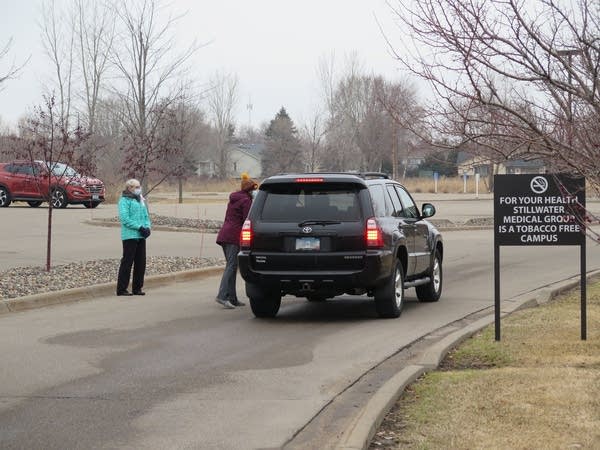Clinics shifting as much as possible to telemedicine

Go Deeper.
Create an account or log in to save stories.
Like this?
Thanks for liking this story! We have added it to a list of your favorite stories.
Laura Geislinger’s boys, 5-year-old Charlie and 9-year-old Ben, are due for medication checks with their primary caregiver.
“We actually had an appointment scheduled last week and decided we didn’t want to risk bringing them into the clinic, so we canceled that appointment,” said Geislinger. “We just don't want to risk being out in public.”
In order to get their medicine, the kids need to be seen by their doctor. They have an appointment next week and, for the first time, it will be a virtual visit. They were first offered a telephone visit, but then scheduled a video chat.
“I didn’t like making that decision of maybe stopping their medication for a while because we couldn’t get in to see the doctor,” said Geislinger. “It seems as though the clinics are coming up with great plans fast to get your needs met, so I wouldn’t hesitate to give them a call and see what they recommend and what the options are.”
Turn Up Your Support
MPR News helps you turn down the noise and build shared understanding. Turn up your support for this public resource and keep trusted journalism accessible to all.
Many clinics offer telehealth visits to some degree, but the pandemic has forced them to ramp up the service to reduce potential COVID-19 exposure at clinic locations.

The transition has been sudden and doctors and patients are still adjusting to it, said Maria Huntley, CEO of the Minnesota Academy of Family Physicians. The group represents more than 3,000 doctors in the state.
“What I’m hearing from most of our members — both here in the metro area and all across all of Minnesota — is that clinics are rapidly evolving to be able to offer telehealth visits. And they are really hoping that their patients will call the clinic before they come in — in an effort to try to avoid contact when possible,” she said.
Patients who call first may find out that their concerns are easily addressed without an office visit, said Dr. Kurt Elting-Ballard, a regional medical director for Allina Health.
"Especially with this conversion to digital visits, we're happy to talk to you on the phone," he said.
Allina Health has about 60 clinics in its system, making a swift transition to virtual visits potentially daunting, said Elting-Ballard.
"I've been amazed at how fast things have happened and how dedicated people are and how people are really stepped up to make things possible that I thought, 'Wow, it's going to take a year,'“ he said. “But it didn't take a year. It took a day."

Some patients have wondered if they should avoid seeking health care at this time to reduce the burden on clinics. But if you need care, you shouldn’t delay it, said Elting-Ballard.
That's the same message from HealthPartners. The health system is also ramping up training to provide more video visits, said Rae Ann Williams, HealthPartners’ regional medical director of primary care.
“Patients should know that their primary care clinicians are still here to care for them even though our model may be a little bit different right now because of COVID-19,” she said.
HealthPartners has dedicated several of its clinics to handling respiratory concerns that may or may not be related to the coronavirus. Its other clinics are reserved for people who are not showing possible COVID-19 symptoms, said Williams.
“We’ve identified four of our clinics sites that we will be managing those patients with respiratory conditions, whether that’s their primary concern or whether they simply have a cough in addition to perhaps a sprained ankle or an ankle injury that they still need to come in,” she said.
For everyone else, care is being delivered on a case-by-case basis.
“We’re doing our best to see patients in the clinics for what we are calling essential visits or visits that need to take place in person, recognizing that much of what we do can be done virtually," said Williams.
The COVID-19 pandemic is forcing health systems to rely on telemedicine more than ever. And as doctors and patients get more comfortable with it, it may be difficult to shift back to some conventional visits, said Elting-Ballard.
"I think this is going to be one of those events that probably changes the way we practice medicine and, I think, in a good way," he said.


